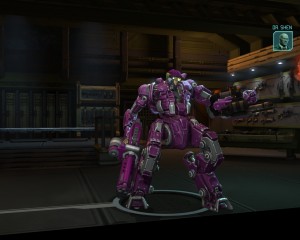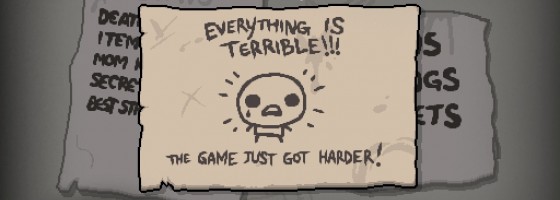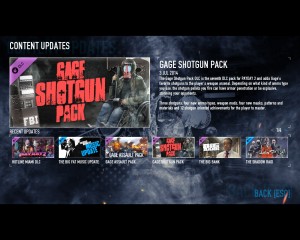Recently, Klei Entertainment put out the first piece of purchasable DLC for Invisible Inc. In it, it extends the campaign mode while adding in other features as well. While more content is always welcomed, I was hoping for more; specifically a certain kind of content that helps to improve games built around randomization or replayability. For today’s post, I want to talk more about supplemental content and how it can do wonders for making your game better.
Building up vs. Building out:
New content in video games has been going on since the days of expansion packs, and getting $20-$30 worth of new content maybe six months to a year after the game was released. Today, the ability to digitally add new content has made the ability to upgrade games a lot quicker, and with it, expansions have gone away in favor of micro DLC content.
With that said, I still prefer getting a good chunk of content via a major DLC expansion, but we already talked about that in an earlier post. In this post, we’re going to focus more on the differences and design theories between incremental and supplemental content.
In most video games, new content is designed around adding to the experience: Your game was 10 hours long before? Now it’s 15 thanks to new missions. Or in multiplayer games with new maps, modes, prestige systems, which extends the playtime beyond the original release. In these examples, the content that is added is considered incremental; adding to the base experience and making the game as a whole bigger and longer.
This kind of content works best for multiplayer titles and singleplayer games built around linear experiences. With that said, there is the second form of content to talk about.
Many rogue-like or randomly generated-based titles are about having a set experience or goal: Get to the final floor of a tower, complete X objectives and so on.
In these games, because the beginning and end are set with a randomly generated middle, expanding on the time spent playing doesn’t really make sense here.
If your game was already hard to get through to start, extending the playtime by another two hours may make your game grueling. With that said, how do you as a game developer make your game better? The answer is supplemental content: Content designed to flesh out the experience, without necessarily making it longer.
In this case, you have content that enhances the systems and modes you already have in the game, or a new system that directly benefits what’s already there. By doing it like this, your game will still last the same amount of time, but the experience during that set time will be vastly different than it was pre-content.
My favorite example and case in point, is something that I’m sure you all know what I’m talking about at this point.
Content Within:
XCOM Enemy Within is one of my favorite expansions to any game I’ve played, and I celebrated that in another post. The beauty of the expansion and how Firaxis worked was that they favored supplemental content instead of incremental content. Your path through a XCOM campaign hit all the same notes as the original release, but how you got through it was vastly different. The first thing was the new resource MELD that also added in bionics and gene therapy addition to your squaddies. Then there were quality of life improvements such as medals, new gear, new enemies and new campaign modifiers.

Supplemental content works to make each experience more varied, without necessarily adding to the overall playthrough
That way, Firaxis took the experience and gamespace that they already balanced and fine-tuned, and simply made it better without making it bigger.
Another example would be the work done to The Binding of Isaac. While there have been new levels added at the end in the form of the shop and dark room, most of the content has been supplemental: New bosses, new enemies, new rooms, floor variants, new items/events and new characters to play as.
Once again, a typical Isaac playthrough can last about 25-40 minutes, but the supplemental content makes sure that those 25-40 minutes won’t be the same on each play.
With all that said, now comes the tricky part: How do you design supplemental content?
Renovating your Game:
Coming up with supplemental content can be tricky, as you’re not developing content designed to increase the length of the game, but to grow what’s already there. You should look at your existing game systems to see if there is any room to enhance them. With randomly or procedurally generated titles, you can always add new content that the game can pull from when generating levels or challenges.
XCOM Enemy Within had the number of maps you could fight on increased with the expansion, which right there made the game more appealing to players. And of course we can bring up Isaac again and how each expansion increases the number of rooms that the game can pull from when it’s designing a level for you to play.
Adding new systems is tough; you need to add something new that enhances the content that’s already there. In most cases, this is going to be content that your audience may not even know they wanted in the first place. Enemy Within had the entire MELD system that was added in, that augmented how you improved your squaddies and tactics on the field.
Going back to Invisible Inc from the beginning, I was somewhat dismayed to learn that the main bulk of the new content of the expansion was adding 48 hours of additional in-game time to the campaign; as opposed to radically mixing up how the base content of each play would go. This brings me to one final point about supplemental content, the best examples of this occur in the mid-game portion of your title.

Expert design of supplemental content adds in new game systems that enhance and change the base content or play of a title
The reason is that the beginning and end of most games are set; the beginning because the player starts out the same way every time, and the end because there is a set baddie or situation to deal with.
The middle is where a lot of the game’s experience can be shifted and altered, and is a good place to add supplemental content.
The Isaac example being perfect here as well; I know how the beginning of the game is and the ending, but everything between those two points is up for grabs thanks to the varying rooms, items and bosses to fight.
Knowing how to Grow Your Game:
Whether or not you use incremental or supplemental content is important when deciding how best to grow your game over the long run.
The different philosophies work best with different types of games; supplemental for games built around replayability and incremental for games that you want the experience to grow bigger over time.
In today’s market, many consumers expect games to be supported after their release, and being able to adequately plan out your development along these two lines can help you with that post release support.


